Caryn
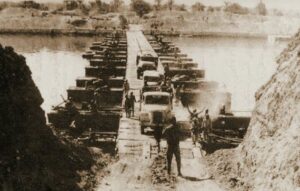
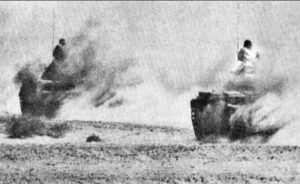 There has not been a time in my memory that was void of Middle East tensions, and perhaps there never been such a time since Biblical times. There have been many attempts and many negotiations trying to achieve Middle East peace, but none have ever really been successful. There have, however, been many wars, conflicts, and attacks on the countries of the Middle East, especially on Israel.
There has not been a time in my memory that was void of Middle East tensions, and perhaps there never been such a time since Biblical times. There have been many attempts and many negotiations trying to achieve Middle East peace, but none have ever really been successful. There have, however, been many wars, conflicts, and attacks on the countries of the Middle East, especially on Israel.
On October 6, 1973, in a surprise attack by Egyptian and Syrian forces on Israel, again threw the Middle East into turmoil. This particular attack threatened to bring the United States and the Soviet Union into direct conflict for the first time since the Cuban Missile Crisis in 1962. The United States and the Soviet Union had a tense relationship already, and although actual combat did not break out between the two nations, the events surrounding what became known as the Yom Kippur War seriously damaged United States-Soviet relations and all but destroyed then President Richard Nixon’s much publicized policy of détente (an end to hostilities).
Going into the war, Egypt and Syria, who were armed with the latest in Soviet weaponry, appeared to have the upper hand, and it looked like the two-front attack might bring victory to Egypt and Syria, who were looking to avenge themselves after their humiliating defeat in the Six-Day War of 1967. Nevertheless, Israeli counterattacks, aided by massive amounts of US military assistance, as well as disorganization among the Syrian and Egyptian forces turned the tide. The Israeli troops drove the Syrian troops back, and Syrians and seized the strategically important Golan Heights. The Israeli forces were even harder on the Egyptian army, forcing them to retreat back through the Sinai Desert, thousands of their troops were surrounded and cut off by the Israeli army.
As concerns deepened over the possibility of US-Soviet involvement in the conflict, Secretary of State Henry Kissinger, together with his Soviet counterparts, eventually arranged a shaky cease-fire. The Israeli troops had no intention of ending their siege of the Egyptian troops, who by this time were low on food and medicine, the Soviets threatened to take unilateral action to rescue them. This brought the situation close to the boiling point, and with tempers flared both in Washington and Moscow, the US military forces went to a Stage 3 alert. In case you didn’t know it, Stage 1 is war, so the volatile situation was about to explode. The threat of war with the US caused the Soviets to back down on their threat, but the damage to relations between the two nations was serious and would not be resolved for a long time, if ever. I’m still not sure that relationship is on anything but shaky ground.
Nevertheless, Kissinger worked feverishly to bring about a peace settlement between Israel, Syria, and Egypt. In what later became known as “shuttle diplomacy,” the secretary of state flew from nation to nation 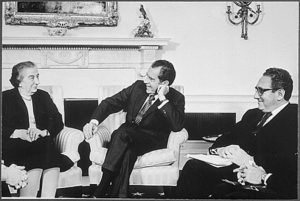
 hammering out the details of the peace accord. Finally, a little more comfortable with things, Israel began to withdraw its troops from some of their positions in both the Sinai and Syrian territory. For their part, Egypt promised to forego the use of force in its dealings with Israel. Syria only grudgingly accepted the peace plan, but they remained adamantly opposed to the existence of the Israeli state…a feeling that still exists among many Middle Eastern nations to this day.
hammering out the details of the peace accord. Finally, a little more comfortable with things, Israel began to withdraw its troops from some of their positions in both the Sinai and Syrian territory. For their part, Egypt promised to forego the use of force in its dealings with Israel. Syria only grudgingly accepted the peace plan, but they remained adamantly opposed to the existence of the Israeli state…a feeling that still exists among many Middle Eastern nations to this day.

 Not every man can say he shares his birthday with his son-in-law or father-in-law, but my uncle, Jim Wolfe and his son-in-law, Bernard “Shorty” Cameron got to say that. Shorty became Uncle Jim’s son-in-law, on December 28, 1969, when he married my cousin Shirley Cameron. Uncle Jim and Shorty always got along very well…even living next door to each other for most of their lives. When it came to Uncle Jim needing help due to his Alzheimer’s Disease, Shorty was one of the people who helped him. I think Uncle Jim and Shorty always liked that they had the same birthday. They liked doing things together like taking trips, the whole family sometimes came for surprise visits. It was always a great time.
Not every man can say he shares his birthday with his son-in-law or father-in-law, but my uncle, Jim Wolfe and his son-in-law, Bernard “Shorty” Cameron got to say that. Shorty became Uncle Jim’s son-in-law, on December 28, 1969, when he married my cousin Shirley Cameron. Uncle Jim and Shorty always got along very well…even living next door to each other for most of their lives. When it came to Uncle Jim needing help due to his Alzheimer’s Disease, Shorty was one of the people who helped him. I think Uncle Jim and Shorty always liked that they had the same birthday. They liked doing things together like taking trips, the whole family sometimes came for surprise visits. It was always a great time.
Since Uncle Jim and Aunt Ruth moved away from Casper when my sisters and I were just kids, I suppose that 
 they always seemed like world travelers to us. I don’t think they ever really traveled to anyplace exotic, unless maybe Uncle Jim did when he was in the service. Nevertheless, he always seemed to know a lot about a lot of places, and we really loved hearing the stories he had to tell. I always wondered how he could know so much about so many things. I suppose that he might have been pulling our legs with his knowledge, but it always seemed plausible, so we believed him. I will always remember how much we loved to listen to him tell his tales, be they truth or fiction.
they always seemed like world travelers to us. I don’t think they ever really traveled to anyplace exotic, unless maybe Uncle Jim did when he was in the service. Nevertheless, he always seemed to know a lot about a lot of places, and we really loved hearing the stories he had to tell. I always wondered how he could know so much about so many things. I suppose that he might have been pulling our legs with his knowledge, but it always seemed plausible, so we believed him. I will always remember how much we loved to listen to him tell his tales, be they truth or fiction.
Uncle Jim was a gentle man, who loved kids. He treasured each and every one of his children and grandchildren. They were the lights of his life…after his beloved wife, my Aunt Ruth, that is. Uncle Jim loved Aunt Ruth so much. It was always so sweet to see them together. They did everything together, from working 
 around their place to the many miles they traveled. It broke his heart when she left us in 1992, at just 66 years old. While he lived for another twenty-one years before he joined her in Heaven, I don’t really think that he was ever the same. He eventually slipped into his own memory world, where Aunt Ruth was still alive and with him. Today would have been Uncle Jim’s 101st and Shorty’s 81st birthday. Happy birthday in Heaven Uncle Jim and Shorty!! Try to stay out of trouble today!! I know the party will be great anyway. We love and miss you very much.
around their place to the many miles they traveled. It broke his heart when she left us in 1992, at just 66 years old. While he lived for another twenty-one years before he joined her in Heaven, I don’t really think that he was ever the same. He eventually slipped into his own memory world, where Aunt Ruth was still alive and with him. Today would have been Uncle Jim’s 101st and Shorty’s 81st birthday. Happy birthday in Heaven Uncle Jim and Shorty!! Try to stay out of trouble today!! I know the party will be great anyway. We love and miss you very much.

 No one wants to think about an innocent person going to prison for a crime they did not commit, and I like to think that it doesn’t happen very often, but I think there was a time when it was a little more common that it is these days. While it may not happen as often these days as it used to, more and more of these wrongful incarcerations are coming to light these days, because of DNA testing. Michael Morton (born August 12, 1954) was convicted in a Williamson County, Texas court in 1986, of murdering his wife, Christine Morton. He never gave up the fight. He maintained in innocence until the end, and in the end, it was proven that he was in fact, innocent. Unfortunately, that did not mean that he was spared a prison sentence. He actually spent almost 25 years behind bars, sadly.
No one wants to think about an innocent person going to prison for a crime they did not commit, and I like to think that it doesn’t happen very often, but I think there was a time when it was a little more common that it is these days. While it may not happen as often these days as it used to, more and more of these wrongful incarcerations are coming to light these days, because of DNA testing. Michael Morton (born August 12, 1954) was convicted in a Williamson County, Texas court in 1986, of murdering his wife, Christine Morton. He never gave up the fight. He maintained in innocence until the end, and in the end, it was proven that he was in fact, innocent. Unfortunately, that did not mean that he was spared a prison sentence. He actually spent almost 25 years behind bars, sadly.
On the afternoon of August 13, 1986, a neighbor found 31-year-old Christine Morton beaten to death in her bed in the Williamson County, Texas, home near Austin, that she shared with Michael, a grocery store manager, and their 3-year-old son, Eric. The investigation began, and six weeks later, Morton, who had no criminal record or history of violence, was arrested for Christine’s murder. At trial, the prosecution contended Morton had slain his wife of seven years after she refused to have sex with him on the night of August 12, his 32nd birthday. Morton stated repeatedly that he had nothing to do with his wife’s death and said an intruder must have killed her after he left for work early on the morning of August 13. No witnesses or physical evidence linked Morton to the crime. There wasn’t anything circumstantial or ever really anything alleged to connect him to the crime, except that he had access to the home. Nevertheless, Michael Morton was convicted on February 17, 1987, and sentenced to life behind bars. So began his nightmare.
During his trial and subsequent time in prison, Morton’s defense team asked the state to test DNA on a variety of items, including a blood-stained bandanna found by police the day after the murder at an abandoned construction site close to the Morton home. For whatever reason, the Williamson County district attorney successfully blocked all requests for testing until 2010, when a Texas appeals court ordered that testing on the bandana take place. The team’s persistence finally paid off. The test results revealed the bandana contained Christine Morton’s blood and hair, along with the DNA of another man, Mark Alan Norwood, who was a felon with a long criminal record. Norwood had worked in the Austin area as a carpet layer at the time of the murder.
Finally, after waiting almost 25 years for real justice, Michael Morton was released on October 4, 2011. A month after Morton was freed, Norwood, who was by then 57, was arrested for Christine Morton’s killing. In March 2013, he was found guilty of her murder and sentenced to life in prison. Based on DNA evidence, Norwood also was indicted for killing a second woman, Debra Baker, whose 1988 murder in Austin had remained unsolved. Like Morton, Baker was bludgeoned to death in her bed. She lived just blocks from Norwood at the time of her murder. Michael Morton was officially exonerated in December of that year.
After a yearlong investigation into prosecutor, Ken Anderson, the State Bar of Texas filed a disciplinary petition against Ken Anderson in October 2012. By then, the prosecutor was a Texas district, elected in 2002. The Texas State Bar alleged that Anderson had withheld various pieces of evidence from Morton’s attorneys, including a transcript of an August 1986 taped interview between the case’s lead investigator and Morton’s mother-in-law, in which she stated that Morton’s then 3-year-old son, Eric had told her in detail about witnessing his mother’s murder and said his father was not home at the time. Anderson managed to pull off a plea deal to settle the charges against him. He agreed to serve 10 days in jail, perform 500 hours of community service, give up his law license and pay a $500 fine. I think that is an outrageous miscarriage of justice. He had knowingly withheld evidence that cost another man 25 years of his life. He should have had to serve the same length of time.
Morton was later able to re-establish contact with his son, who had cut ties with him when he was fifteen, because he then believed that he had not remembered the incident correctly, and it was his dad who had killed 
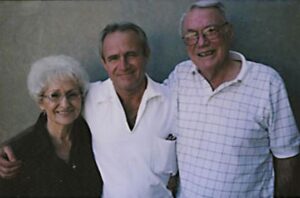 his mom. A further miscarriage of justice that was handed down to the elder Morton. He had not only lost 25 years of his own life, but an additional 13 years of his son’s life. Thankfully, Christine Morton’s sister adopted Eric Morton, so his dad was able to find his son when he got out of prison. When his was released, Morton lived with his parents in Liberty City, Texas for a while, before moving to Kilgore, Texas. In 2013, Morton married Cynthia May Chessman, who he met at his church.
his mom. A further miscarriage of justice that was handed down to the elder Morton. He had not only lost 25 years of his own life, but an additional 13 years of his son’s life. Thankfully, Christine Morton’s sister adopted Eric Morton, so his dad was able to find his son when he got out of prison. When his was released, Morton lived with his parents in Liberty City, Texas for a while, before moving to Kilgore, Texas. In 2013, Morton married Cynthia May Chessman, who he met at his church.

 I’m sure most of us have seen a covered bridge…at least in pictures. Most people think of them as being nostalgic, and I do too. They remind me of times long gone, but why were bridges covered in the first place? It wasn’t to lend a romantic flair to the bridge, you know. No, the real reason for covered bridges actually traces back to what the bridge is made of. Wooden structures then and now are exposed to harsh weather and subject to wear and tear. Covering the bridge does two important things. The cover protects the wooden deck…the surface that people and vehicles travel on. It also protects the truss system, which is the lattice framework under and around the bridge that supports the deck, helping the structure last longer. The roof and side elements were replaceable as long as the support structure remained strong. If the support structure weakens, the bridge will have to be rebuilt, because rotting wood cannot be made strong again. This is one of the main reasons that covered bridges have slowly given way to steel bridges over time. Steel structures hold up years longer than wood.
I’m sure most of us have seen a covered bridge…at least in pictures. Most people think of them as being nostalgic, and I do too. They remind me of times long gone, but why were bridges covered in the first place? It wasn’t to lend a romantic flair to the bridge, you know. No, the real reason for covered bridges actually traces back to what the bridge is made of. Wooden structures then and now are exposed to harsh weather and subject to wear and tear. Covering the bridge does two important things. The cover protects the wooden deck…the surface that people and vehicles travel on. It also protects the truss system, which is the lattice framework under and around the bridge that supports the deck, helping the structure last longer. The roof and side elements were replaceable as long as the support structure remained strong. If the support structure weakens, the bridge will have to be rebuilt, because rotting wood cannot be made strong again. This is one of the main reasons that covered bridges have slowly given way to steel bridges over time. Steel structures hold up years longer than wood.
A covered bridge is a timber-truss bridge with a roof, decking, and siding, so most covered bridges actually look like a building over water. They are an almost complete enclosure, with the exception of their two ends, and sometimes windows. Uncovered wooden bridges typically have a lifespan of only 20 years because of the effects of rain and sun, but when a bridge is covered, it could last over 100 years. In fact, the oldest covered bridge in the United States is Hyde Hall Covered Bridge, which is on the grounds of Glimmerglass State Park in Cooperstown. It was built by George Clarke in 1825 on what was then the private property of Hyde Hall.
Nevertheless, while covered bridges last a long time, in the United States, only about 1 in 10 survived the 20th century. It wasn’t because they were dilapidated, but it was due to deliberate replacement, neglect, and the 
 high cost of restoration. Covered bridges have a long history, and they can be found throughout Europe and especially North America in places like New England, the Mid-Atlantic and the regions around the Great Lakes…mainly because these areas are very wooded, and so the building material there is plentiful. I think it’s rather sad that the covered bridges have almost become extinct…such a loss to history.
high cost of restoration. Covered bridges have a long history, and they can be found throughout Europe and especially North America in places like New England, the Mid-Atlantic and the regions around the Great Lakes…mainly because these areas are very wooded, and so the building material there is plentiful. I think it’s rather sad that the covered bridges have almost become extinct…such a loss to history.
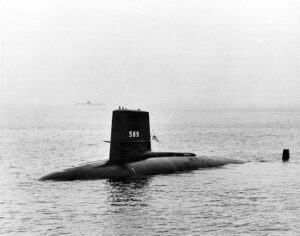
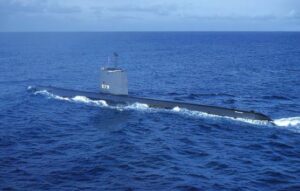 USS Scorpion (SSN-589) was a Skipjack-class nuclear-powered submarine that served in the United States Navy, and the sixth vessel, and second submarine, of the US Navy to carry that name. It was also the fourth nuclear powered submarine to mysteriously go missing in 1968. Scorpion was lost with all its crew, on May 22, 1968. Scorpion is one of two nuclear submarines the US Navy has lost, the other being USS Thresher. The other nuclear-powered submarines to go missing in 1968 at the height of the Cold War were Israeli submarine INS Dakar, the French submarine Minerve, and the Soviet submarine K-129. At the time Scorpion went missing when she was sent to surveil the Soviet submarine K-129, which had apparently already gone missing earlier in the year. The wreckage of USS Scorpion is still at the bottom of the North Atlantic Ocean…with all its armaments and nuclear engine.
USS Scorpion (SSN-589) was a Skipjack-class nuclear-powered submarine that served in the United States Navy, and the sixth vessel, and second submarine, of the US Navy to carry that name. It was also the fourth nuclear powered submarine to mysteriously go missing in 1968. Scorpion was lost with all its crew, on May 22, 1968. Scorpion is one of two nuclear submarines the US Navy has lost, the other being USS Thresher. The other nuclear-powered submarines to go missing in 1968 at the height of the Cold War were Israeli submarine INS Dakar, the French submarine Minerve, and the Soviet submarine K-129. At the time Scorpion went missing when she was sent to surveil the Soviet submarine K-129, which had apparently already gone missing earlier in the year. The wreckage of USS Scorpion is still at the bottom of the North Atlantic Ocean…with all its armaments and nuclear engine.
The Cold War is a term commonly used to refer to a period of geopolitical tension between the United States and the Soviet Union and their respective allies, the Western Bloc and the Eastern Bloc. The first phase of the Cold War began shortly after the end of World War II in 1945. The United States and its allies created the NATO military alliance in 1949 in the apprehension of a Soviet attack and termed their global policy against Soviet influence containment.
Following World War II, tensions were running high between world powers. It is thought that if there was ever a time when a real possibility of a nuclear attack existed, it was during the Cold War. This meant that countries were frantically looking for any advantage they could use to take over their competitors. One way to watch the other countries was to Surveil beneath the waves where they could be more hidden. This surveillance included the use of submarine crews. That, of course, explains the reason for mysterious disappearance of four subs from four different countries virtually at the same time.
The first disappearance was the INS Dakar from Israel, which went down just east of Crete on January 25, 1968. Dakar’s wreckage was found in 1991, but no official cause for the sinking was determined. Next, The French sub Minerve disappeared about an hour outside of Toulon on January 27, 1968. That wreckage was found in 2019, and it showed the hull had separated into three sections. When the French government made the decision to leave the wreck, any chance of answers was eliminated. The Soviet K-129 disappeared earlier in the year, so maybe USS Scorpion was looking for it. Nevertheless, on May 22, 1968, the disappearance conspiracy of 1968 was brought to a close, when USS Scorpion. The submarine would not be fount until October of 1968. The Navy looked into the disaster, but in the end the official court of inquiry said the cause of the loss could not be determined with certainty. Still, there are several theories on what might have happened. One centered around a malfunction of a torpedo. Others suspected poor maintenance may have been the culprit, citing the rushed overhaul.
That was the last report anyone heard about the submarine. After decades of research and investigation, the US Navy has never changed its report that a catastrophic event caused the sinking. Nevertheless, there are those who believe the Scorpion was taken out by the Soviets in retaliation for perceived attack on the K-129 
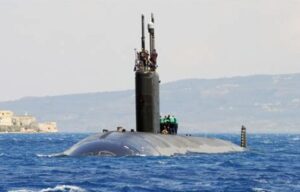 submarine earlier in the year. Neither country will admit or deny any direct action relating to the submarine sabotage, but something happened during the first half of 1968. Four nuclear-powered submarines, from four different countries just don’t start sinking for no reason, and yet, no reason was ever determined. They just sunk.
submarine earlier in the year. Neither country will admit or deny any direct action relating to the submarine sabotage, but something happened during the first half of 1968. Four nuclear-powered submarines, from four different countries just don’t start sinking for no reason, and yet, no reason was ever determined. They just sunk.
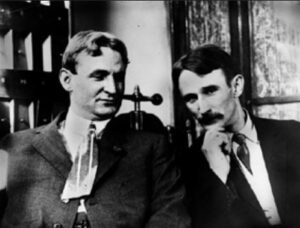
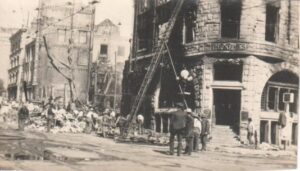 The battle between those who support unions and those who do not, has gone on for a long time, and each has its pros and cons. Unions help employers create a more stable, productive workforce…one in which workers have a say in improving their jobs. Unions help bring workers out of poverty and into the middle class. In fact, in states where workers don’t have union rights, workers’ incomes are lower. So, it is always “in the employer’s best interest” not to have a union, but really not in the best interest of the workers, for whom the working conditions can be sub-par, and even dangerous. Because of that, the battle between the two sides has raged on for many years.
The battle between those who support unions and those who do not, has gone on for a long time, and each has its pros and cons. Unions help employers create a more stable, productive workforce…one in which workers have a say in improving their jobs. Unions help bring workers out of poverty and into the middle class. In fact, in states where workers don’t have union rights, workers’ incomes are lower. So, it is always “in the employer’s best interest” not to have a union, but really not in the best interest of the workers, for whom the working conditions can be sub-par, and even dangerous. Because of that, the battle between the two sides has raged on for many years.
In the early 1900s, one such situation resorted to violence, and that violence came to a boiling point on October 1, 1910, when a suitcase bomb ignited a massive explosion that destroyed the Los Angeles Times building in the Los Angeles’ downtown area. The explosion killed 21 and 100 more people, all of whom were workers for the Los Angeles Times, who were working late to put out an early afternoon edition of the paper to celebrate the results of the Vanderbilt Cup auto race. Since Los Angeles Times publisher Harrison Otis was an extreme opponent of unions, he believed that the bomb was directed at him. With that in mind, he hired the nation’s premier private detective of that time, William J Burns, to crack the case. Otis was now a quiet opponent to unions, and in fact, he printed numerous editorials against unions. He was also the leader of the Merchants and Manufacturing Association, a powerful group of business owners with extensive political connections…and very much anti-union.
As Burns investigation progressed, it led him to the Bridge and Structural Iron Workers Union and their treasurer, John J McNamara. McNamara’s brother, James B (JB) was discovered to be the actual bomber. He left a suitcase with a dynamite bomb near barrels of flammable printer’s ink between the Los Angeles Times Building and the Times annex, known as “Ink Alley”, which contained the paper’s printing press. The dynamite had a detonator connected to a mechanical windup clock, set to close an electric battery circuit at 1:00am, and set off the explosion. JB left similar bombs, also set to explode at 1:00am, next to the homes of both Times publisher, Otis and Felix Zeehandelaar, secretary of the M and M. He then boarded a train to San Francisco so he could have credible evidence that he was out of town when the bomb at the Times building went off.
In April 1911, after Burns got a confession out of Ortie McManigal, who had allegedly been the intermediary between McNamara and two bomb experts, he personally arrested John McNamara and his brother, James in Indiana. Burns also managed to get the brothers to California, without any legal authority, where they were to be prosecuted.
In an immediate response, union members and left-wing supporters alike, rallied around the McNamara brothers. They quickly raised a large defense fund, and union representatives pleaded with Clarence Darrow to take the case. Darrow, who was the best defense attorney America had to offer at that time. He was noted for getting “Big Bill” Haywood, the union leader of the Industrial Workers of the World, off on murder charges in Idaho a few years earlier. They offered him $50,000, and he found that he just couldn’t resist, so he took the case. As the case progressed, Darrow began to realize that the McNamara brothers were guilty, and as evidence mounted, he worked a deal in which JB McNamara pled guilty and received life in prison, as opposed to the death penalty. Despite repeated attempts by left-wing labor leaders and certain politicians to win his release, he refused to file any parole requests. James B (JB) McNamara died of cancer in San Quentin on March 9, 1941. John J (JJ) McNamara received 17 years in prison. JJ McNamara left prison after nine years, and the 
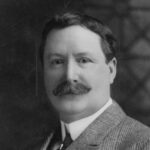 Iron Workers’ union welcomed him back as an organizer. He was convicted of threatening the destruction of a building unless the contractor hired union members and was sent back to prison. Released once more, the union discovered that he had embezzled $200, and fired him. JJ spent the rest of his life drifting from job to job, and died in Butte, Montana on May 8, 1941. In all, 40 additional co-conspirators were convicted of various crimes and served various sentences, but it was always thought that the McNamara brothers were the ring leaders, and that they others had bit parts in the attack.
Iron Workers’ union welcomed him back as an organizer. He was convicted of threatening the destruction of a building unless the contractor hired union members and was sent back to prison. Released once more, the union discovered that he had embezzled $200, and fired him. JJ spent the rest of his life drifting from job to job, and died in Butte, Montana on May 8, 1941. In all, 40 additional co-conspirators were convicted of various crimes and served various sentences, but it was always thought that the McNamara brothers were the ring leaders, and that they others had bit parts in the attack.

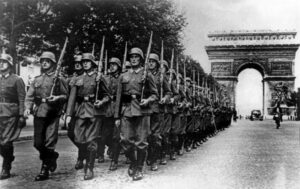 During World War II and even earlier really, Adolf Hitler was in the middle of his plan to take over the world. He was ruthless, and when he invaded a country, he didn’t care how many people died, as long as he got his way. The Battle of France took place between May 10, 1940 and June 25, 1940. The surrender of France to the Nazis in 1940 was a complex situation. The German invasion left metropolitan France at the mercy of Nazi armies. Really, once Paris fell on June 14, 1940, the German conquest of France was complete. Part of the problem was that Marshal Henri Petain replaced Paul Reynaud as prime minister and proved to be a weak leader who announced his intention to sign an armistice with the Nazis.
During World War II and even earlier really, Adolf Hitler was in the middle of his plan to take over the world. He was ruthless, and when he invaded a country, he didn’t care how many people died, as long as he got his way. The Battle of France took place between May 10, 1940 and June 25, 1940. The surrender of France to the Nazis in 1940 was a complex situation. The German invasion left metropolitan France at the mercy of Nazi armies. Really, once Paris fell on June 14, 1940, the German conquest of France was complete. Part of the problem was that Marshal Henri Petain replaced Paul Reynaud as prime minister and proved to be a weak leader who announced his intention to sign an armistice with the Nazis.
While not very well known at the time, French General Charles de Gaulle, made a broadcast on June 18, 1940, to France from England, where he would help with the resistance. The Appeal of June 18 was the first speech made by Charles de Gaulle after his arrival in London in 1940 following the Battle of France. The speech was broadcast to Vichy France by the radio services of the British Broadcasting Corporation (BBC). This speech is considered to have marked the beginning of the French Resistance in World War II. It is regarded as one of the most important speeches in French history. General de Gaulle said in his speech, “The leaders who, for many years, were at the head of French armies, have formed a government. This government, alleging our armies to be undone, agreed with the enemy to stop fighting. Of course, we were subdued by the mechanical, ground and air forces of the enemy. Infinitely more than their number, it was the tanks, the airplanes, the tactics of the Germans which made us retreat. It was the tanks, the airplanes, the tactics of the Germans that surprised our leaders to the point to bring them there where they are today.
But has the last word been said? Must hope disappear? Is defeat final? No!
Believe me, I speak to you with full knowledge of the facts and tell you that nothing is lost for France. The same means that overcame us can bring us to a day of victory. For France is not alone! She is not alone! She is not alone! She has a vast Empire behind her. She can align with the British Empire that holds the sea and continues the fight. She can, like England, use without limit the immense industry of United States.
This war is not limited to the unfortunate territory of our country. This war is not finished by the battle of France. This war is a world wide war. All the faults, all the delays, all the suffering, do not prevent there to be, in the world, all the necessary means to one day crush our enemies. Vanquished today by mechanical force, we will be able to overcome in the future by a superior mechanical force.
The destiny of the world is here. I, General de Gaulle, currently in London, invite the officers and the French soldiers who are located in British territory or who would come there, with their weapons or without their weapons, I invite the engineers and the special workers of armament industries who are located in British territory or who would come there, to put themselves in contact with me.
Whatever happens, the flame of the French resistance must not be extinguished and will not be extinguished.”
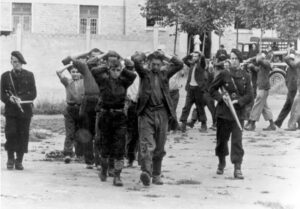
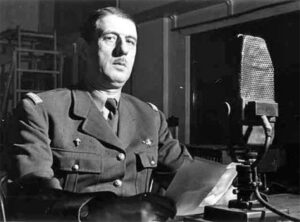 His work with the French Resistance made Charles de Gaulle almost a household word in France. It gave the people hope for freedom. The French Resistance fought to the death to beat the Nazis. This makes me think of current times, and all the freedoms that we have lost. These lessons from the French Resistance are valuable to this day. Never give up. You only lose a battle when you quit fighting. We must never quit fighting.
His work with the French Resistance made Charles de Gaulle almost a household word in France. It gave the people hope for freedom. The French Resistance fought to the death to beat the Nazis. This makes me think of current times, and all the freedoms that we have lost. These lessons from the French Resistance are valuable to this day. Never give up. You only lose a battle when you quit fighting. We must never quit fighting.

 As World War I…the “War to end all Wars,” was coming to a close, there still remained one serious German stronghold that had to be taken down in order to ensure Allied success in winning the war. That stronghold, known to the Allies as the Hindenburg Line, an area they named after the German commander in chief, Paul von Hindenburg, was built in late 1916. The Germans called it the Siegfried Line. Either was, the Hindenburg Line was a heavily fortified zone running several miles behind the active front between the north coast of France and Verdun, near the border of France and Belgium. This area was a must win, must take back line, if the Allies were going to win the war.
As World War I…the “War to end all Wars,” was coming to a close, there still remained one serious German stronghold that had to be taken down in order to ensure Allied success in winning the war. That stronghold, known to the Allies as the Hindenburg Line, an area they named after the German commander in chief, Paul von Hindenburg, was built in late 1916. The Germans called it the Siegfried Line. Either was, the Hindenburg Line was a heavily fortified zone running several miles behind the active front between the north coast of France and Verdun, near the border of France and Belgium. This area was a must win, must take back line, if the Allies were going to win the war.
The German army was working hard to make it very difficult to break through the Hindenburg line by September 1918. At that time, the German line consisted of six defensive lines. The zone formed by these six lines measured some 6,000 yards deep, and it was ribbed with lengths of barbed wire and dotted with concrete emplacements to be used as firing positions. It was a fortress that the Germans were sure would be impenetrable. However, while the Hindenburg Line was heavily fortified, it was not without weakness. Its southern part was most vulnerable to attack, because it included the Saint Quentin Canal, and the entire area was not totally out of sight of artillery observation by the enemy. Any attack by the Allies would need to come through this weakness. Another weakness was that the whole system was laid out linearly, as opposed to newer constructions that had adapted to more recent developments in firepower and were built with scattered “strong points” laid out like a checkerboard to enhance the intensity of artillery fire. These things would be the saving grace for the Allies, and the downfall for the Germans.
Knowing these vulnerabilities, the Allies began to concentrate all the force built up during their so-called “Hundred Days Offensive,” to their advantage. The operation kicked off on August 8, 1918, and by late September, the Allies had gained a decisive victory at Amiens, France, against the Hindenburg Line. Australian, British, French, and American forces participated in the attack on the Hindenburg Line. The attack began with a huge bombardment, using 1,637 guns along a 10,000-yard-long front. The final 24 hours of the offensive saw the British firing a record 945,052 shells. After capturing the Saint Quentin Canal with a creeping barrage of fire…126 shells for each 500 yards of German trench over an eight-hour period, the Allies successfully breached the Hindenburg Line on September 29, 1918.
The attack was pushed forward by Australian and United States troops, who, out of a must-win sense of urgency, attacked the heavily fortified town of Bellicourt with tanks and aircraft. The battle raged on for four days, with heavy losses on both sides. Finally, the Germans were forced to retreat. With Kaiser Wilhelm II 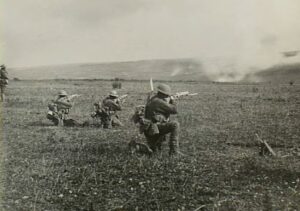
 pressured by the military into accepting governmental reform and Germany’s ally, Bulgaria, suing for an armistice by the end of September, the Central Powers were in disarray on the battlefield, as well as the home front. The Allies continued to press their advantage on the Western Front throughout the month of October, and against their predictions, World War I came to an almost abrupt end on November 11, 1918.
pressured by the military into accepting governmental reform and Germany’s ally, Bulgaria, suing for an armistice by the end of September, the Central Powers were in disarray on the battlefield, as well as the home front. The Allies continued to press their advantage on the Western Front throughout the month of October, and against their predictions, World War I came to an almost abrupt end on November 11, 1918.
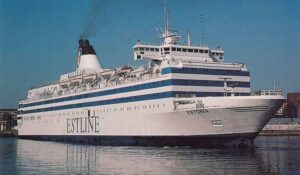
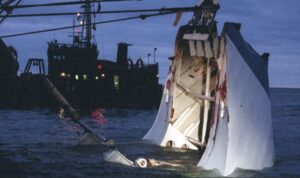 I love to ride on the Ferry boats in Washington state. It’s especially cool to have your car right there with you at the end of your journey. You just get in and go off to the rest of your adventure. Of course, a Ferry boat is just that…a boat, and that always leaves the possibility of one sinking. That has happened on numerous occasions. It seems to me though that most of the time when they sink, it is in open waters, and not the inland waters, such as the Puget Sound.
I love to ride on the Ferry boats in Washington state. It’s especially cool to have your car right there with you at the end of your journey. You just get in and go off to the rest of your adventure. Of course, a Ferry boat is just that…a boat, and that always leaves the possibility of one sinking. That has happened on numerous occasions. It seems to me though that most of the time when they sink, it is in open waters, and not the inland waters, such as the Puget Sound.
One such maritime disaster in open waters, occurred on September 28, 1994, when a large car-and-passenger ferry…MS Estonia, sank in the Baltic Sea, killing 852 people. MS Estonia was a cruiseferry built in 1980 at the West German shipyard Meyer Werft in Papenburg. The ship was sold to Nordström and Thulin in 1993, for use on Estline’s Tallinn–Stockholm route. Estonia departed slightly behind schedule that night, departing at at 7:15pm on September 27. It was expected in Stockholm the next morning at about 9:00am. The ship was carrying 989 people, which included 803 passengers and 186 crew. The seas were rough that night, and it was determined by a 1997 investigation, that the ship’s bow door locks had failed during the storm. However, new underwater footage appears to show a previously unrecorded 13-foot hole in the ship’s hull. Given that information, many people think that it might have been a Russian torpedo that took down the MS Estonia. Whatever the case may be, the sinking of Estonia was one of the worst maritime disasters of the 20th century.
The main reason for the new theory is that Estonia was traveling on an overnight cruise from Tallinn, the capital city of Estonia, to Stockholm, Sweden, when it sank off the coast of Finland. Estonia is a former Soviet republic that gained its independence in 1991, but the last Russian troops actually left in 1994. Tallinn was a popular and affordable travel destination for Swedes. The Estonia was a type of ferry known as a “ro-ro,” which featured a smorgasbord, live music, dancing and drinking, and allowed people to drive vehicles onto one end of the ship and drive off on the other end.
There is no doubt that the stormy weather played a part in the disaster, because in the storm, the waves reached an estimated 15 to 20 feet. The Estonia went down in the middle of the night. It went down so quickly, that many passengers were trapped inside the ship. Some were able to escape and managed to make it into lifeboats. Some of those later drowned in the frigid water or died from hypothermia. Out of the 989 souls on board Estonia, only 137 survived, most of those were rescued by helicopters.
Officially, a joint Swedish-Finnish-Estonian government committee ruled it an accident and blamed it on stormy 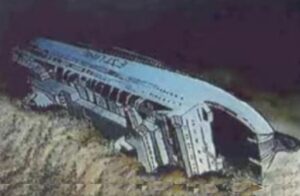
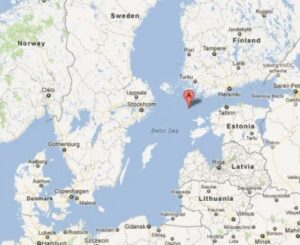 weather that caused water to pour through an open bow door and into the Estonia’s car deck, destabilizing the ship and capsizing it in less than an hour. Nevertheless, there were others, including some family and friends of the Estonia victims, who believed the sinking was the result of a pre-existing hole caused by a collision or explosion. I don’t suppose that the full truth will ever be known, but the loss of life will forever be felt.
weather that caused water to pour through an open bow door and into the Estonia’s car deck, destabilizing the ship and capsizing it in less than an hour. Nevertheless, there were others, including some family and friends of the Estonia victims, who believed the sinking was the result of a pre-existing hole caused by a collision or explosion. I don’t suppose that the full truth will ever be known, but the loss of life will forever be felt.

 Athena Salazar is my grandson, Josh Petersen’s fiancée, and they are planning for the soon arrival of their little baby boy. Athena and Josh met in middle school, and while they weren’t an item then, they became an item when they reconnected at work almost two years ago, they quickly knew that it was love. I have been so amazed at how perfect they are for each other. Each of them is the perfect complement to the other. Athena is such a gentle person, and at this stage in her life, she is very ready to be a mommy…very ready!! And Josh is growing and becoming the man of the house.
Athena Salazar is my grandson, Josh Petersen’s fiancée, and they are planning for the soon arrival of their little baby boy. Athena and Josh met in middle school, and while they weren’t an item then, they became an item when they reconnected at work almost two years ago, they quickly knew that it was love. I have been so amazed at how perfect they are for each other. Each of them is the perfect complement to the other. Athena is such a gentle person, and at this stage in her life, she is very ready to be a mommy…very ready!! And Josh is growing and becoming the man of the house.
Athena loves children. She has nieces and nephews who are very dear to her. She even works in a daycare center, which doesn’t surprise me, because it is very much the essence of Athena. She has a heart for people, but especially for children. I think she is going to be a wonderful mother. Athena also has a wonderful sense of 
 humor. She can be totally goofy one minute and very sentimental the next. That is really just what Josh needed in his life. Someone to laugh with, as well as live out all the romantic, sentimental dreams that they both have.
humor. She can be totally goofy one minute and very sentimental the next. That is really just what Josh needed in his life. Someone to laugh with, as well as live out all the romantic, sentimental dreams that they both have.
Athena is a mix of sunflowers and red roses…her favorite flowers. I like that. She is a little bit country sunshine and a little bit quiet romance. Her home is decorated largely in sunflowers, with red roses mixed in, which makes it feel bright and sunny. I remember when Josh lived alone, and his walls were almost empty. His place needed a woman’s touch, and that’s where Athena came in. Now their house is a home, and soon their baby boy will come and make them a family…and what a wonderful day that will be. They can’t wait to get their family started!!

 I love the couple that these two kids are. I can say kids, because I’m the grandma, and they will always be the kids to me. Grandmas can get away with that. I love how in love these kids are, and I can’t wait to see where their future takes them. Their pregnancy pictures are so cute, and I love how Josh is doing the “sympathy pregnancy” act, so Athena doesn’t feel alone. I’m not even sure he realizes it. He just loves her so much that it comes naturally. Today is Athena’s birthday. Happy birthday Athena!! Have a great day!! We love you!!
I love the couple that these two kids are. I can say kids, because I’m the grandma, and they will always be the kids to me. Grandmas can get away with that. I love how in love these kids are, and I can’t wait to see where their future takes them. Their pregnancy pictures are so cute, and I love how Josh is doing the “sympathy pregnancy” act, so Athena doesn’t feel alone. I’m not even sure he realizes it. He just loves her so much that it comes naturally. Today is Athena’s birthday. Happy birthday Athena!! Have a great day!! We love you!!

